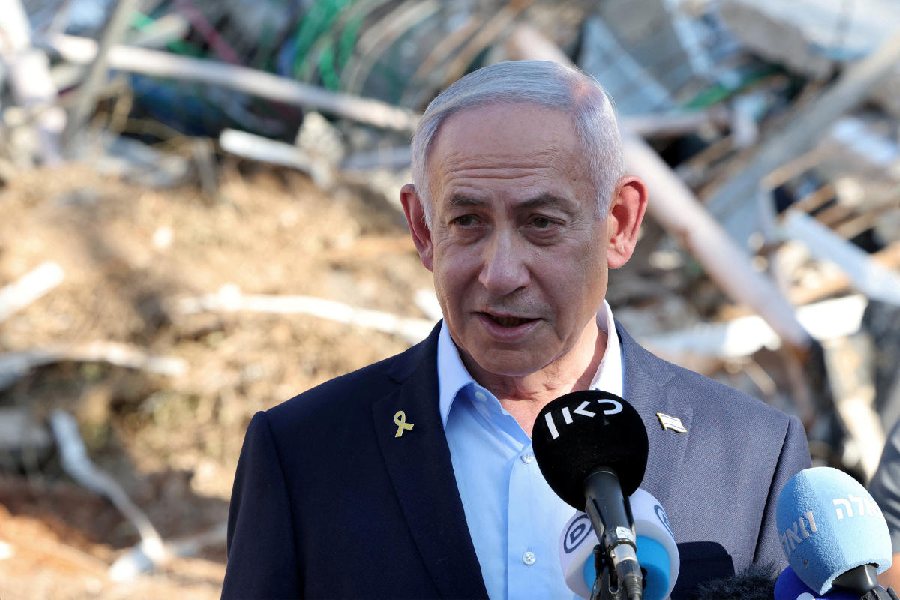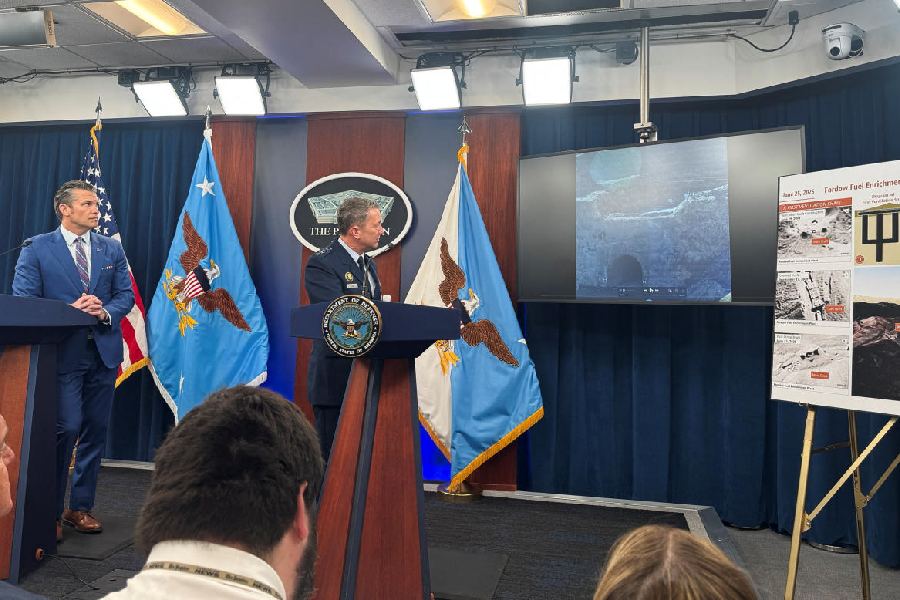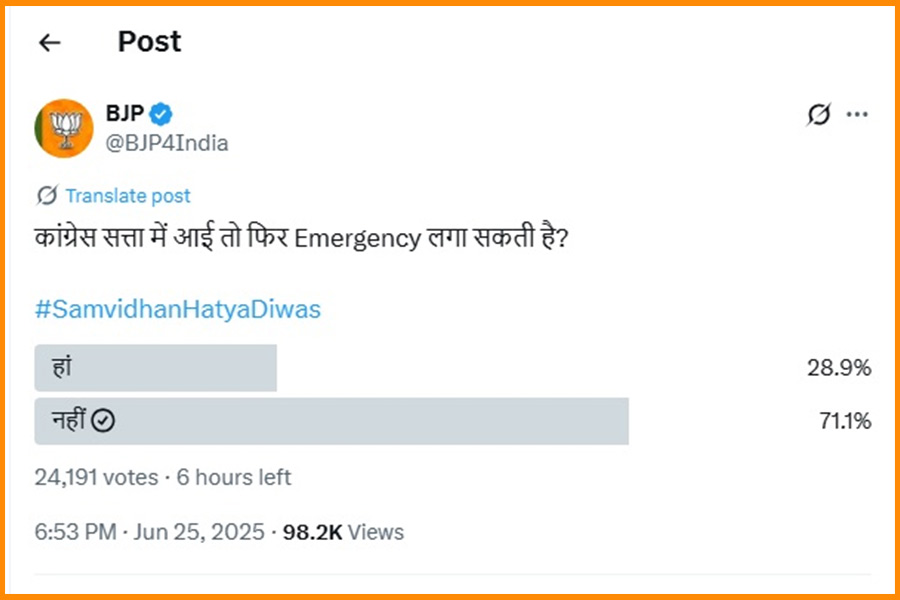 |
 |
 |
 |
| (From top): A view of Inle lake; the gold spires of the Shwedagon pagoda in Yangon; a pagoda in Bagan; two other pagodas in the same ruined city |
Delhi, at the end of December is a truly gray and unhappy place. The onset of the cold, the fog and the crashingly dull New Year parties are reason enough to flee. I went to Myanmar at the end of December and spent eight happy days in a land of gentle people, beautiful pagodas and amazing fish curries.
I prepare for most trips with a quick dash through the relevant Lonely Planet. Many conscientious travelers agonise over their decision to visit, as the tourist dollar is perceived to support the tyrannical generals. The Myanmar guide was peppered with well-meaning advice on how to salve a troubled conscience.
No mobile phones or laptops, said our travel agent. Dictators dislike indiscriminate chatting. I cheerfully left mine behind. I like the idea of being out of reach on holiday, office crises be damned.
Myanmar International Airlines is a good way to begin the Burmese experience. The peaceful smiling crew is a soothing antidote to the surly Delhi airport staff and the endless foot-stomping queues.
Landing late at night in Yangon, I glimpsed an elaborate Oriental facade to the airport, golden pagoda- inspired arches evocative of a film set. The cavernous interior was devoid of airport hustle and bustle; the nine or 10 of us seemed to be the only passengers who had disembarked that night. The sleepy immigration and customs officials were all dressed in longyis (the Burmese sarong), which further reinforced the sense of having wandered onto a set.
Yangon is a spacious city, wide tree-lined boulevards are lined with beautiful old colonial buildings. I had a nostalgic sense of a shared architectural past, now lost to us forever, as our cities get buried under the spread of malls and flyovers. Our hotel there, the Kandawgyi Palace Hotel, was a splendid old building with teak flooring and many fine teak pillars. From our rooms on the top floor, we had an awe-inspiring view of the fantastical gold spires of the Shwedagon Pagoda, towering over the cityscape. That was our first stop. Filled with innumerable small pagodas and statues of Buddha; gold-leafed pillars intermingled with glittering mosaics and exquisitely carved fretwork, while the diamond, ruby and emerald encrusted spires glittered in the bright sunlight.
Bogyoke Aung San Market (Scott Market to those who read The Glass Palace by Amitav Ghosh) is an enormous covered structure filled with rows of shops. Everything from rubies to lacquer ware, colourful longyis and velvet flip-flops is sold here. As well as cheap Chinese imports of every description. Bargaining seemed the rule rather than the exception. Every shopkeeper first cheerfully quoted a price, and then said, with twinkling eyes, ?Now you say your price!?
Our next stop was Inle Lake, a vast body of water, 70 miles long and 30 miles wide, home to many villages both on the lake as well as around it. We had heard of the hotels on stilts, which seemed an unusual and attractive location to bring in a New Year. Little thatched huts standing on stilts in the lake, connected by walkways, formed a charming picture of our accommodation as our motorboat drew up. However, the charm ebbed considerably at night as icy air blew across the lake through the chinks in the thatch and I lay freezing under a pink Chinese nylon blanket.
A much talked-about tourist attraction are the leg rowers of Inle Lake. The local fishermen row their boats with one leg wrapped around the oar to propel the boat forward with considerable speed. Personally speaking, however, I wouldn?t recommend scooting halfway across Myanmar to watch someone row a boat with his leg. Not unless of course, one has a keen academic interest in leg rowing techniques.
During the day, we spent our time travelling around the huge lake visiting the markets in between catching glimpses of beautiful pagodas and monasteries floating on the shoreline. The Jumping Cat Monastery, thus named after the acrobatic skills of the residents, was one brief stopover. An enterprising monk had trained a number of lazy, well-fed cats to jump through a hoop whenever enough tourists gathered. After each jump the cats were rewarded with Friskies, and the monk, with dollars.
I was most interested in the Shan food served in our hotel. Closely related to mainland Chinese food, the tastes and textures were quite distinct from the spicy curries we had earlier eaten in Yangon. For a dedicated non-vegetarian and a lover of all kinds of fish, fishy smells and tastes, Burmese cuisine is a delight. From the beginning, we insisted on avoiding the predictable hotel buffets and went in search of local restaurants for Burmese food. Most meals consisted of an array of as many as 10 to 15 small dishes, each a different spicy curry. Fish, chicken, pork and various vegetables lavishly seasoned with dried shrimp were served with steamed rice. Lap?et was an interesting dish, offered as a snack. Made from fermented green tea leaves, it is served with shredded fresh ginger, fried dried beans, peanuts and dried shrimp.
Our final stop was Bagan, the ruined city that lies on the banks of the Irrawady. It is a scene of immense and desolate beauty; miles of ancient pagodas lie in every direction across the wide plain. At sunset, as we climbed to the top of one of the pagodas, the setting sun turned the vast plain of pagoda spires into a mystical golden landscape of unimaginable beauty.
The atmosphere in Bagan is easygoing and one can hire bicycles to ride along the quiet roads and linger at innumerable beautiful monuments. This is also the centre for the lacquerware industry and there are many fine examples of the craft in the shops that are scattered all over. We stayed in the Japanese-run Thiripyitsaya Sakura hotel, which was run with precision. The comfortable rooms were scattered in cottages across large gardens along the banks of the river. Dinner was served under the stars on a vast wooden deck with a panoramic view of the river. I could have stayed longer and was very sorry to leave.
Beyond and beneath the superficial joys of tourism, Myanmar is a troubled land. The repressive political regime rigidly controls its citizens, curtailing many of their freedoms. The few Burmese that we had the opportunity to interact with however, appeared to live their lives with a sense of grace and culture that was deeply moving. There is much beauty, warmth and a real generosity. I?ll be happy to go back.
Photographs by Kevin Nigli
Angling for attention
 |
There are those amongst us who thrive on excitement — battling white water rapids, bungee-jumping off steep cliffs or braving the chills and thrills of treks in the mountains. But then there are the others — relaxed, laid-back souls, for whom true comfort is all about indulging in life’s simple pleasures. Like angling. Sure, maybe the most challenging thing you can do here is lock horns with a Giant Catfish or hunt down a Yellowfin, but so far as die-hard anglers are concerned, that’s the most excitement they need. So, whether you’re the type who likes to string a worm onto a makeshift line — or a pro with the latest in fishing gear — get set for loads of fun, for India, with its dozens of rivers and thousands of streams, offers fishing opportunities galore.
What makes angling easy in India is that most major cities lie along rivers, making fishing spots extremely easy to reach. What’s more, most states have well-organised Departments of Fisheries, where special hatcheries ensure that there’s always a gene pool of local and exotic fish available. This apart, fish sanctuaries and hatcheries in Himachal Pradesh, Uttar Pradesh and other states through which major rivers flow, also maintain a vast stock of fish which are specially bred for re-stocking rivers.
The fishing trails
Before stocking up on the fishing tackle, it’s advisable to have the best spots down pat. And here, Himachal Pradesh, Karnataka, Uttar Pradesh and Jammu and Kashmir rank way up there among the best places in India for freshwater fishing. Streams feeding the Beas river in the Kulu Manali region are known for brown trout and in U.P, the Dodital Lake ensures a good catch during all seasons. This apart, the Ramganga and the Sharda rivers near Jim Corbett National Park promise an encounter with the mighty mahseer, while Rishikesh is another fishing site rating high on the popularity scales.
Moving eastwards, the main sites for fishing in Arunachal Pradesh are Bhalukpong and Topi on the river Kameng, Pashighat on the river Siang and Tezu on the river Lohit. The Brahmaputra, its tributaries and smaller streams and rivers are home to two main sport fish, locally known as the katli and the jhungha, though other varieties like the brown trout and the mahseer are also found, especially in Assam’s Teesta and Manas rivers. The Chilka Lake in Orissa too, offers game fishing, and is rich in tiger prawn, tuna and other fish.
Due south and the Mahanadi, Kaveri, Krishna and Godavari are open to angling almost all year, barring a short spell in the monsoons when the fish are breeding. Prominent species in the peninsular rivers include the high-backed mahseer, the purree, the khudchee and the white carp. The streams, rivers and pools in the Nilgiris are Tamil Nadu’s best fishing sites and in Kerala, good angling is possible in the streams around Munnar. The Kaveri, in Karnataka, is the prime angling river and the sea-fishing region extends from Goa to Thiruvananthapuram along the south-west coast.
And finally, it’s on to the Lakshwadeep and Andaman and Nicobar Islands where the waters teem with marine life, though conservation laws here have put a large portion off-limits for anglers.
All in good time
Angling is possible on Indian rivers almost all year, although most state authorities forbid it during the monsoons. However, regional variations have to be kept in mind — winters in the Himalayas, for instance, are too cold for fishing. October to November and mid-February to mid-May are the best times for sport-fishing.
License to reel
Licences and permits are must-haves, so ensure you get hold of them from the designated official, or your fishing trip may get nipped in the bud even before it properly takes off. Most licences are issued for a specified stretch of water, but in any case, most fish caught must be released back, and anglers are restricted to a specified number of fish per day.
Bag it
Before setting out for the big catch, make sure you stock up on rods, lines, hooks, reel, flies, spinners, spoons and bait. Light water-proof clothing — brown or green in colour, is a must — as are waterproof shoes or light sandals. Don’t forget the sunscreen, hat and dark glasses either — you’ll be sitting for hours in the sun, rest assured you’ll need them.
You’ll need patience, preparation, and skill to make the line work for you, but for the die-hard fisherman, the thrill of landing that prize catch makes it all totally worth the while.
Route map
• So you already know that Star Cruises is going to dock on Indian waters. Now for the details: SuperStar Libra — a 750-cabin luxury liner — will be based in Mumbai from September 25 to April 30, 2006. The ship will sail between Mumbai, Goa, Kochi and Kadmat (Lakshwadeep) offering a selection of cruises. Mumbai to Kadmat/Kochi is a 4 night/5 day affair (Rs 18,500 to Rs 78,000 per person depending on the accommodation), Mumbai to Goa is a 2 night/3 day break (Rs 9,200 to Rs 39,000) and the Mumbai cruise is for a snappy 1 night/2 days (Rs 4,400 to Rs 20,100). If you plan in advance, then it’s also possible to avail of the 45-day Star Saver fares. And while at it, don’t forget to book shore excursions in Goa and Kochi. For more, call 011-516084013.
•Thai Airways is hardselling its direct flights to the American East Coast. The six-times-a-week Bangkok to New York flights will connect the two cities in 17 hours flat. Of, course, it’s still faster to fly directly from India but the Thais are confident Indians will want to holiday in Bangkok before they fly to the US.
• Summer’s here with a vengeance and Wildflower Hall, the Oberoi Group’s spa resort just off Shimla, has a very special offer. Avail of the Escape to Wildflower Hall package and fly with Oberoi Air Charter to the resort from Delhi for free. The only catch is that you must stay at Wildflower Hall a minimum two nights. Till June 20, the hotel is offering special packages and the prices are cheaper if you stay longer.
The per day tariff per person for a 2-night package will set you back by Rs 13,000 and a 3-night package is tagged at Rs 10,400. Then, a 4-night package comes at Rs 9,400 while the 5-nights deal will cost Rs 8,800. The tariff includes accommodation in a deluxe room, a 25 per cent discount on all spa therapies and air transfer from Delhi to Shimla and back, plus car transfers from your home to the airport and the airport to the hotel (and back again). For further details: try the toll-free number 1600 11 2030.
My favourite holiday
 |
Bose Krishnamachari,
artist
nMy favourite holiday was when I visited China about a month ago for an art show. It was a working vacation and we were a large group including several other artist-friends like Sudarshan Shetty and Baiju Parthan. Visiting Xi’an was one of the highlights of our China tour. It is an ancient city and has much to offer besides its rich art and culture. While in Xi’an, we got the opportunity to learn the art styles typical of the region — an enlightening experience. We also went to Shanghai, a bustling metropolis at the mouth of the Yangtze river. The city is a paradise for shopaholics and you can actually shop till you drop at their huge shopping malls. Of course, no tourist can afford to pass up a chance to visit the Great Wall of China. Tiananmen Square is another great attraction.
Initially, we had great problems in communicating. But being artists, we were able to sketch and draw what we meant and were thus able to make ourselves understood. Of course, later we did hire a national guide who proved to be of great help. Another interesting fact we discovered was that in China, Bollywood means only Shah Rukh Khan and Aishwarya Rai










